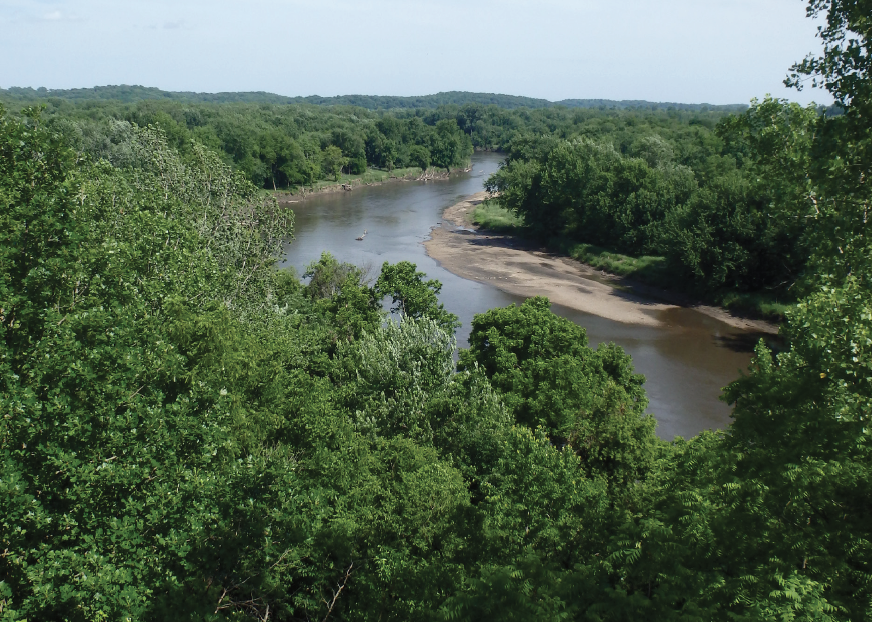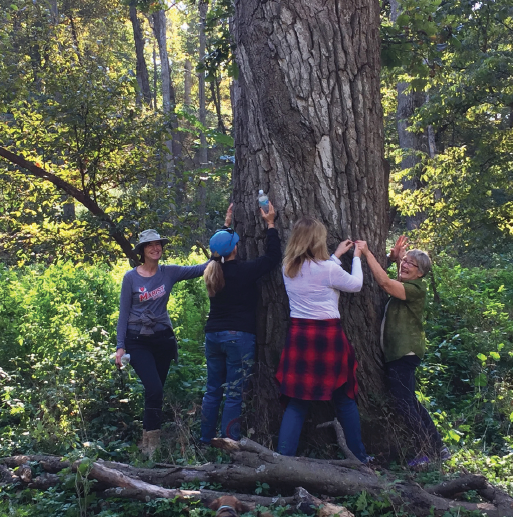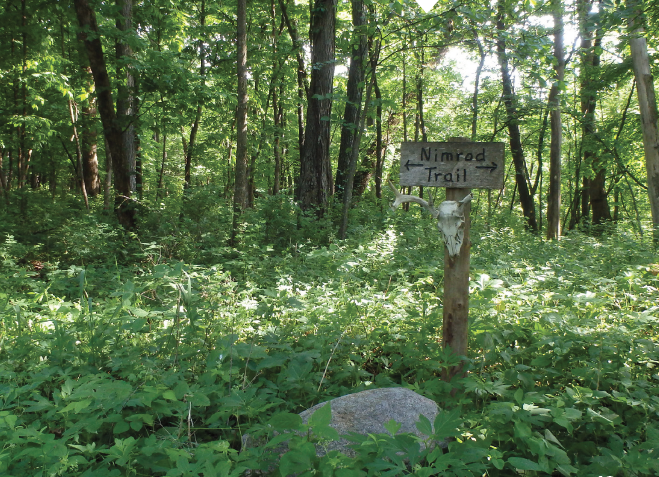The Family Trees
By Katy Heggen on August 13, 2018 in Blog
Descendants of the Ferguson family are well acquainted with their family trees — all 600 acres of them.
Trying to separate the century-and-a-half history of Ferguson Timber, a native woodland near Marshalltown, from that of the family would be fruitless — the two are intertwined, and both are better for it.
Deep roots

The history of Ferguson Timber dates back to 1854 when Nimrod Ferguson purchased a land grant from the U.S. government. Like many homesteaders establishing roots in Iowa at the time, Ferguson built a home and began farming his land.
As the years went on, Nimrod purchased additional wooded lots, expanding his family’s land. His son, David, continued the tradition, trading land with his sisters and neighbors to increase his share of the forest.
“You’d want to have a bit of timber for firewood, but they just acquired it and acquired it. I’m sure their neighbors thought they were nuts,” said Greg Twedt, Nimrod’s great-great-grandson. “I’ve spent time speculating on why they did that, and the only thing I can come up with is they must’ve liked it.”
In the 1930s, David considered donating the timber to the state, but in the end, it remained in the family. The land was handed down through generations, and although the farmland was eventually divided among the family, the timber remained whole and largely undisturbed.
David’s daughters, Janie and Reba, inherited the land from their father. Some of their children built houses in corners of the timber and raised children under the canopy. Those children had children of their own, and each year, families return to the forest to hike, camp, cross-country ski and hear stories of the timber together. These experiences helped solidify a strong commitment to conservation.
“I think it’s just a family value that’s always been there,” said Lisa Mills-LaValle. “It goes back generations. I can’t attribute it to any one person or thing.”
Sensing a need to keep the timber intact as the family grew, Janie and Reba’s children decided to create a family corporation to own and manage the land: Timberland, Inc. Sixteen shareholders — all members of the extended family — meet once a year to talk about the timber, vote on board business and to enjoy the trees together. Doing so has kept the forest — and the family — close.
A working woodland

Ferguson Timber is an impressive oak-hickory woodland interrupted only by the meandering Iowa River. Bald eagles, red-tailed hawks and other large raptors nest among the branches. Other wildlife including bobcats, turkey and deer walk the forest floor.
“I’ve spent the last decade traveling all around the state, and in my non-forester opinion, this is the nicest woodland I’ve seen,” said INHF Conservation Easement Specialist Tylar Samuels.
For more than 20 years, Greg has acted as forest manager, meticulously caring for the woodland, removing invasive species, conducting prescribed burns and sustainably harvesting trees. A forestry management plan created and updated with the Iowa DNR has helped keep the woodland thriving.
“Two hundred years ago it was very easy to grow beautiful stands of oaks in Iowa,” wrote Twedt. “This is no longer the case. But we here in the Ferguson Timber have been trying… and we have been reasonably successful.”
Just as the family’s approach to managing the timber has evolved over the years, so too has its outlook on protection.
In the mid-nineties, the family donated a joint conservation easement on 409 acres to INHF and the Marshall County Conservation Board. Both Lisa credits Greg and her father, Larry Mills, for urging the family to permanently protect the timber.
Last year, Timberland, Inc. donated another conservation easement on 40 acres next to the original donation. Other members of the family including the Twedts and the Oldhams donated conservation easements on two adjoining properties, collectively creating a 452-acre complex of wildlife habitat. Already, the family is discussing potential opportunities for future protection.
New growth

With such a long-standing land ethic, it’s no surprise that the family’s commitment to conservation endures. A new generation of leaders has begun to take root, ready to create their own legacy on the land, just as their parents and grandparents before them.
“I just love how everything seems to coexist,” said Mills-LaValle. “As I walk through the woods, I think about the generations before me and the generations after, and just marvel at the majesty of all this stuff growing together.”